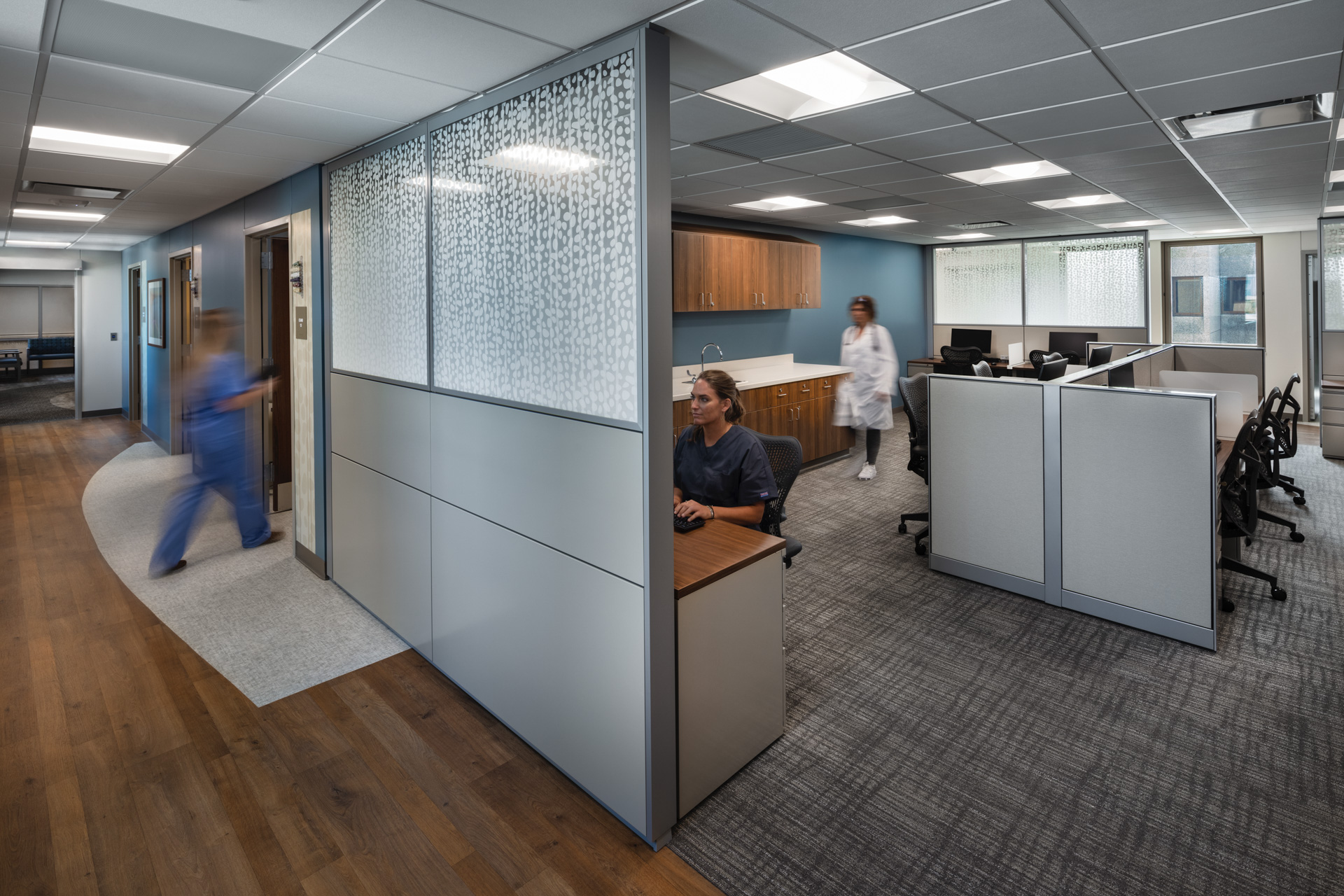The events of the past 18 months have certainly shown that we need to view healthcare workspaces differently and change our lens to focus on adaptability and flexibility as central drivers of our planning and design efforts. We need to embrace a mindset that healthcare workspaces should be able to respond to the ever-changing environment and models of patient care delivery.
Among the many learnings gained during the pandemic are the opportunities to reevaluate the need for some in-person work. The shift in demand for corporate office space offers a helpful benchmark. Leasing of conventional office space by the health care and education industries totaled 10.3 million SF in 2020, a 28% decrease from 2019. Although the health care industry’s demand for conventional office space likely will rebound in 2021, a recent CBRE analysis suggests remote working could cut the overall need for office space by 15% across all industries. However, for work that requires — or benefits — from staff being on-site, there is great value in revisiting the approach to workspace design. As designers, we should look critically at the qualities of the physical workspace unique to healthcare. With a new focus on the healthcare workspaces that support in-person patient care and the well-being of healthcare workers, our challenge is to redefine the physical space needed to support the essential interactions between caregiver and patient.
HERE ARE 5 STRATEGIES TO CREATE AN ADAPTABLE AND FLEXIBLE WORKSPACE FOR CAREGIVERS:
- Budget for more technology. We find technology packages for most construction projects are underfunded, where infrastructure and software often play catch-up to support project needs after the fact. To be successful, technology must encompass meeting, collaborating, and healthcare-specific requirements for telemedicine and medical records. In short, technology needs to support every interaction we previously had in person. Robust technology infrastructure is needed to support the new hybrid work environment and the growing volumes of telemedicine encounters.
- Build fewer walls and spend less on physical construction. Drive the highest acuity program into the lowest cost space and keep non-care space as open as possible. This strategy affords flexibility in responding to the next unknown healthcare event, as well as adaptability in providing different healthcare delivery models for caregivers. Space for the work of caregivers and medical teams can be easily configured through modular systems furniture.
- Maximize the use of prefabrication and modular systems. This strategy provides more quality and speed to market during construction and future adaptability. There is a bell curve of the value created from the use of prefabricated modular components, and the objective is to land at the highest point of the curve. That is the point between smaller components that don’t result in efficiencies and large-scale modularization that doesn’t fit the project budget. The goal is to right-size prefabrication and modular opportunities in the range that offers the greatest value for speed to market, efficiency, flexibility, and long-term reuse.
- Be smarter and more efficient with caregiver space. The needs of healthcare teams are dynamic and space planning needs to be similarly resilient and smart. The workspace needs to be varied and promote chance interactions, dialogue, and collaboration. The physical environment should support different types of work — heads-down focus, small team huddles, and larger multi-team collaboration to share information on diagnosis and treatment. Choice and adaptability are essential and variety is needed as follows:
- Variety in room type and size, with adequate technology to support different use scenarios.
- Variety in an enclosure to establish different levels of privacy.
- Variety in acoustic and visual connectivity to either moderate or encourage interaction.
- Invest in spaces for staff respite. Spending more of the project budget on larger, higher-quality spaces for healthcare staff and providing amenities will pay off with increased staff satisfaction and productivity. Designate spaces where staff can disengage, rejuvenate and truly take a break. Typically, staff space accounts for less than 3% of the overall program, so added costs at this scale will not significantly impact the overall project budget.
Using these strategies will create flexible and adaptable workspaces that can respond to changes in patient care delivery and physical space needs. The best outcomes are realized when the spaces we plan and design are an extension of the individuals using them and support their experience.


